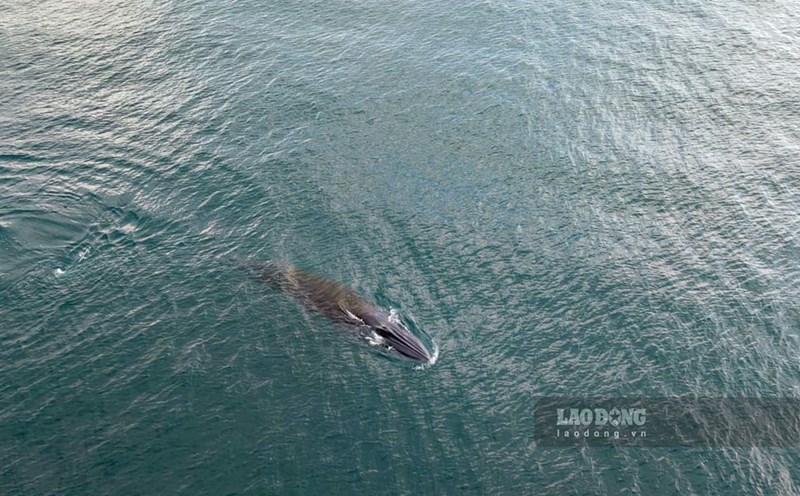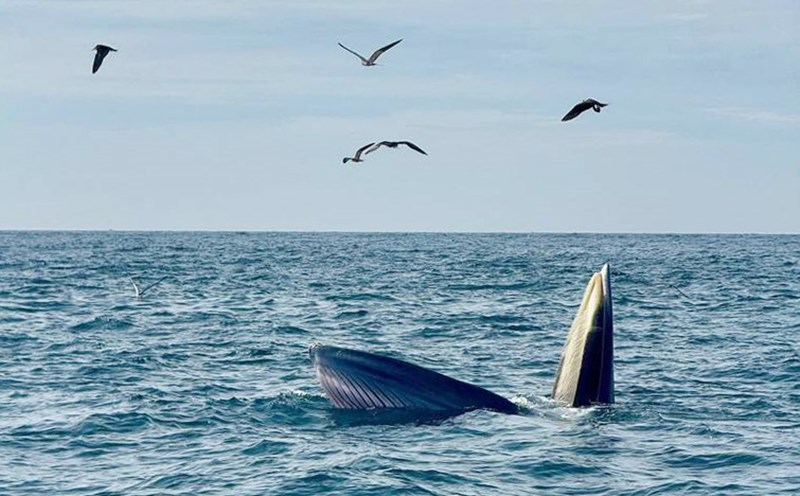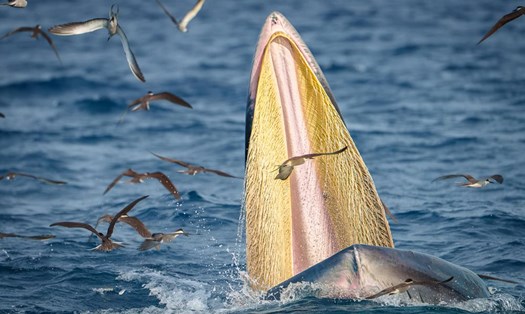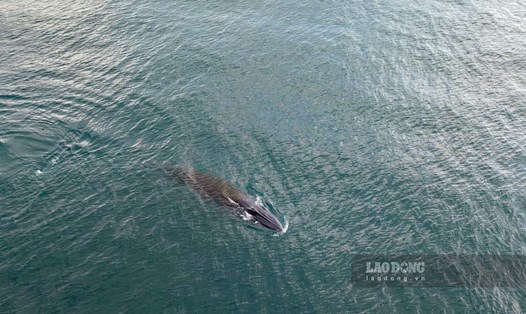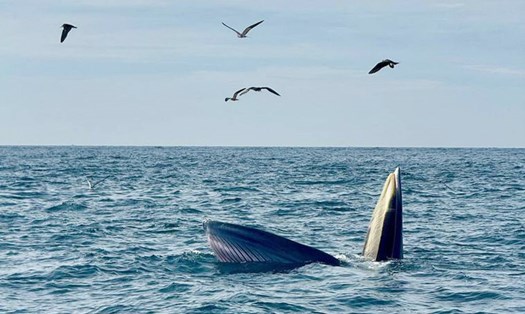A memorable hunting trip
On July 6, when dawn had just begun, we took a fishing boat to leave the shore, heading to the old Nhon Ly sea area (now in Quy Nhon Dong ward, Gia Lai), where in recent days there have been rumors about the appearance of a Bryde whale (known locally as Ong fish). The sea area in front of Ong Nam Hai Mausoleum and the statue of Buddha in Phuoc Sa Pagoda, which is associated with the sacred beliefs of fishermen, is the area where Ong fish often hunting for prey.
At around 5:30 a.m., in the eastern sky, a herd of birds flew over a corner of the sky, wandering around the air as the first signals of a miracle about to happen. Local fishermen said that when free-range birds appear so often, there are usually fish streams below, and Ong fish will be not far away.
In the distance, suddenly a column of white water appeared in the middle of the calm sea with a characteristic thick sound. Ong fish has appeared. In a few short moments, the Bryde whale rose, wandered around, and clung to a small herd of fish gathered near the shore. However, it seems that there is still a need to be cautious about the presence of boats and boats, only about 15 - 20 minutes later, the whale dived deep and disappeared in the blue water.
It seemed that the trip had ended, but suddenly at around 3pm the same day, this whale reappeared, still right in front of Ong Nam Hai Mausoleum. This time, the elephants have moved up more, swimming and hunting for prey for many hours, no longer as nervous as in the morning. Powerful preyfall in the golden afternoon makes the view of Quy Nhon Dong sea more majestic and lively than ever.
For the people here, Ong fish is not only a mascot, but also a symbol of luck and the sacred connection between people and the ocean. And for us, signing today is not just a photo hunting trip, but a journey to record the wonderful moments of nature - right in our homeland.
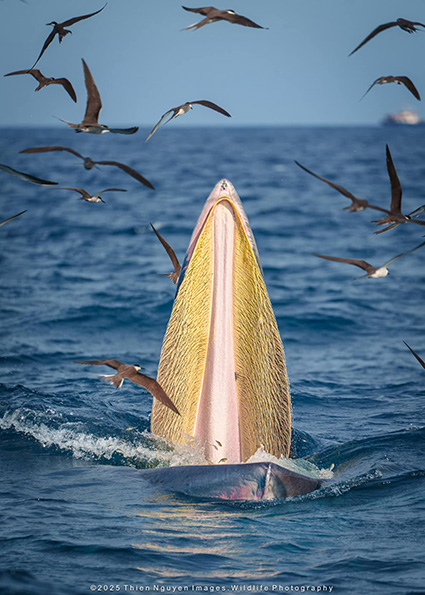
Behind the impressive photos of the whale
To "hunt" for photos of giant Bryde elephants, many photographers like me have to be on duty in fishing villages and coastal areas where they have been hunting for prey for many days. No one knows exactly when the whale will appear, so "pick-ups" have become a familiar part of the career journey.
In previous years, the whale often appeared in the Vung Boi - De Gi area. This year, there are 3 whale individuals recorded at the same time here. Among them, a mother and daughter couple had appeared for a few days and then swam away, leaving behind only one individual for food in the sea near Nhon Ly.
Wild whale. Therefore, the trip to "hunt" for whale photos only relies partly on the experience and understanding of the movement and hunting habits of this animal. In my opinion, the most important factor is still perseverance and luck in choosing the time and location to wait for the whale to appear.
My luggage for the trip included a camera combined with 3 specialized lenses, a flycam, a waterproof case that can withstand a depth of 100m, and a modern lighting system and auxiliary equipment. Like me, other photographers also have pre-owned heavyweight equipment to get the most beautiful photos.
"Hunting" for whale photos in Vietnam is also very different from the experience of working in international waters. Bryde sharks in Vietnam's sea are very shy and extremely sensitive to human presence. Just detect human balls and they immediately sink deeper or swim away. This is in contrast to some other whale species such as humpback whale, funeral fish or killer whale - species that sometimes proactively interact with humans - that I have encountered in many explorations of the ocean abroad.
The characteristics of the marine environment also greatly affect the quality of photography. Areas such as Vung Boi or near Nhon Ly port have many small streams of fish and filanthropic creatures, which are ideal places for whale to feed, but often have cloudy water and poor water visibility. In Nhon Ly, fishing boats and tourist canoes are operating continuously, so diving is almost impossible.
Initially, I planned to try diving to reach the whale at a distance of only 5m, but the photo quality was low due to
The water was cloudy so they had to give up. Fortunately, the photo series taken with a flycam and the camera angle from the boat made me somewhat satisfied.
The short whale hunting trip ended, I returned to Saigon to continue my daily work. Although time is short, just one time with one eye seeing the elephants rise in the middle of the sea and the sky is enough for all efforts to be worth it.
Nguyen Ngoc Thien was born in 1988, a prominent photographer in the field of underwater photography. Starting with street photography, he gradually switched to specializing in oceanography and marine conservation. He has won many prestigious international awards such as: First Prize in the Sea Conservation category at Underwater Photographer of the Year 2022, National Award at Sony World Photography Awards 2023, and Third Prize in Ocean Photographer of the Year 2024... His works often carry the message of connecting people with the ocean and raising awareness of marine environmental protection.


